You won’t find many car reviews that begin with a hot water bottle being filled. But then you won’t find many cars like the Caterham Seven. Low-slung and lithe, the first of these British pocket rockets rolled off the Lotus production line in 1957. Now, over 60 years later, demand is still high for these open, two-seater sports cars. Inexplicably high, in fact.
Because, while they may look charmingly bug-eyed; a real children’s illustration of a sports car, even a cursory glance at the Caterham Seven will tell you that it’s not the most practical of motors. At just over three metres long, the thing is tiny. It’s got wheels scarcely bigger than dinner plates, a kerb weight of just over half a ton and questionable plastic side windows — and that’s before we get onto what it doesn’t have: a radio; much boot space; locking doors; any discernible crumple zones. The list goes on.
The Seven is also so low that, if you have a chronic back condition, it’ll likely flare up just looking at it. And, if you don’t have a chronic back condition, you likely will by the time you struggle yourself into it. These concerns and cautions were voiced to us before we picked up the car by countless doubters and detractors of the brand. Some were worried about safety, others about waterproofing. But everyone we spoke to was worried about temperature. It was, we were told, going to be very, very cold. Hence the hot water bottle.
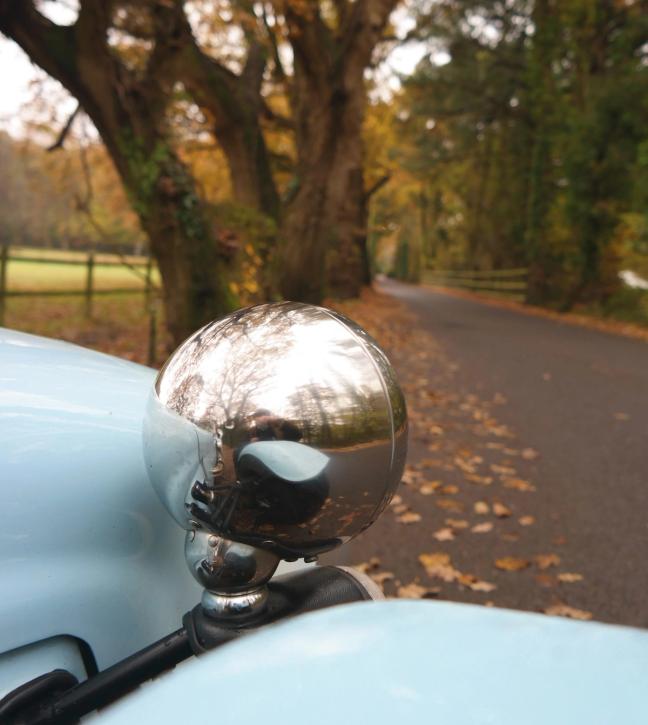
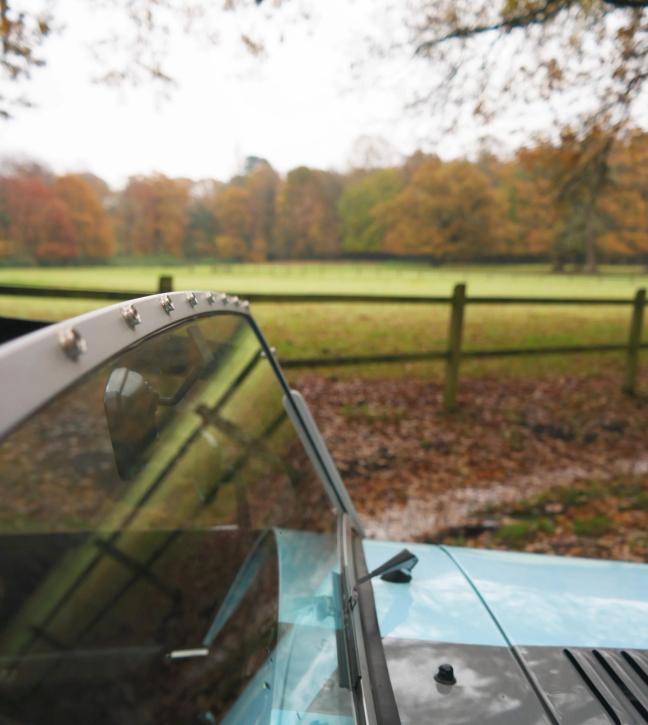
But how bad could it be? How could a car with so many perceived flaws still be in construction after over a half a century? It was a question we kept asking ourselves, and one we decided to answer the only way we knew how: by taking a Caterham 270S on a winter roadtrip.
Hopefully, we’d find a surprising reserve of practicality hiding somewhere in the sports car’s limited storage spaces. Because, like Pimm’s, grizzly bears and your favourite pair of swimming trunks, a Caterham is not something you usually see out during the winter. In summer, sure, the things can be found buzzing like bumblebees around rural Britain’s B-roads. But they tend to take a break over the winter — wrapped up tight under tarpaulins waiting for the frosty snap to thaw away.
Nevertheless, the stage was set. And, on a nippy December morning, we put the key in the ignition and fired up our challenge. The plan was simple: drive from London to the south coast of England and back again on one of the drizzliest days of the year. Our route, through the South Downs, promised beautiful views if the rain let up. The poppered-on leatherette roof seemed waterproof enough, pulled protectively taut over the small cabin. And the seats, deep and recumbent, turned out to be almost suspiciously comfortable once we’d clambered into them.
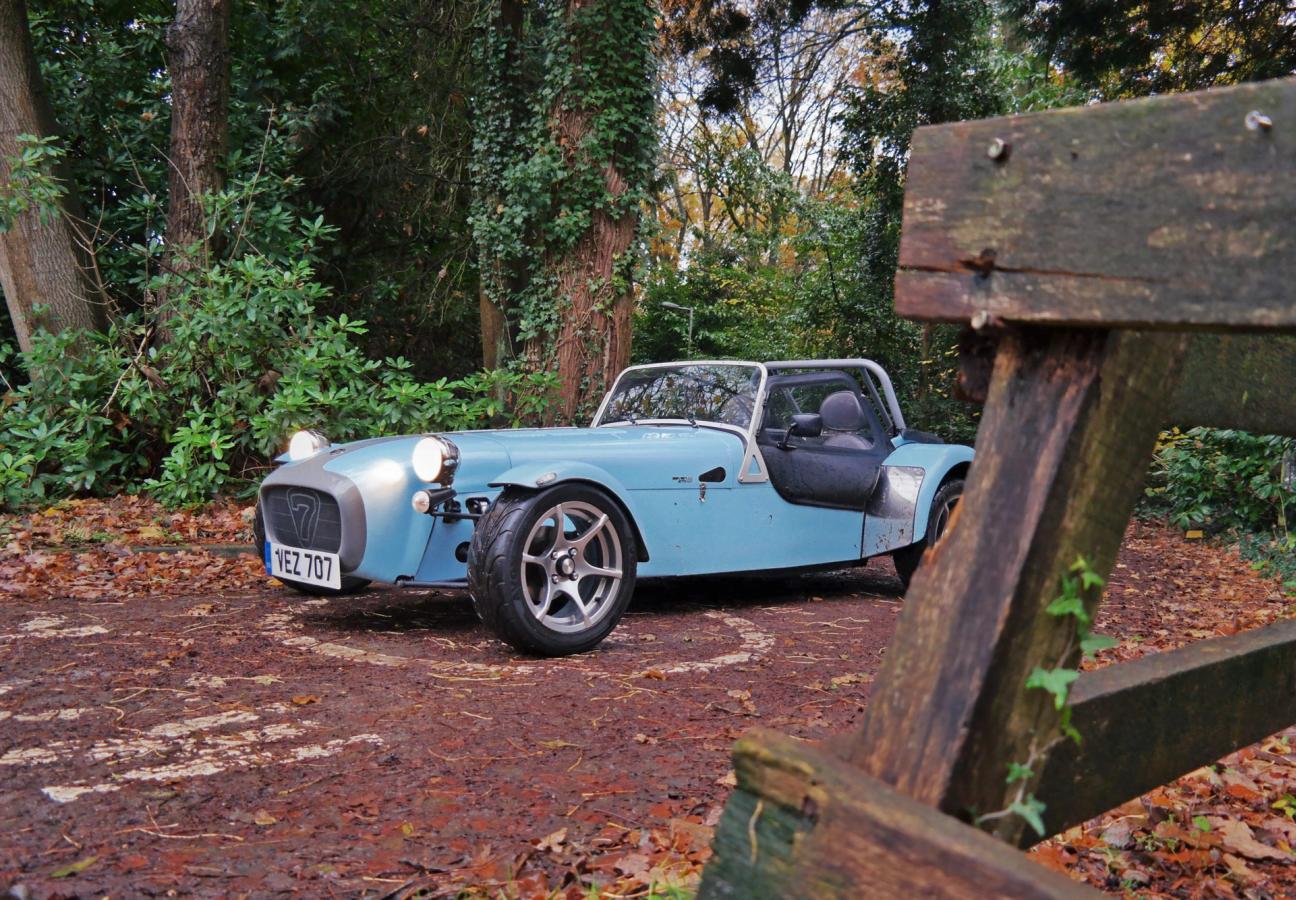
First impressions? Happily positive. The car is undoubtedly small, but more cosy than cramped. Detractors, be damned, we thought. But then we looked at the dashboard. For such a simple dashboard, Caterham has managed to make the Seven’s controls impressively confusing. Aside from the big red ignition button to entice any man-children, there are switches for the hazard warning lights and — to our hot water bottle-swaddled joy — a heater! We’ll come to how that performed later…
So far, so ordinary. But the Caterham veers off from normal dashboard design quickly thereafter. A vivid red immobiliser light blinks out from the dashboard; a relic, but a necessity in a car that has no locks whatsoever. (Seriously, who among us lives somewhere trusting and quaint enough to park one of these up in public?) There are also no stalks around the really, very, ludicrously small steering wheel — with glowing switches instead used to operate the headlights and a black plastic switch to control your indicators — one you must manually turn off after taking a corner.
If you’re used to the bells, whistles, sat navs, Bluetooth and massage chairs of more modern cars, you probably think this sounds like a nightmare. And, we’ll admit, it does take some getting used to — the indicator especially. But here’s the thing: Caterham’s staunch refusal to mimic other modern motors is actually both incredibly brave and really rather endearing. Even Aston Martin used to borrow and botch on bits from Ford Mondeos and workaday Volvos — and a DB9 sold for considerably more than the 270S’ £27,490. So, even though this might be an unusual, even unorthodox car cabin, that by no means makes it a bad one.
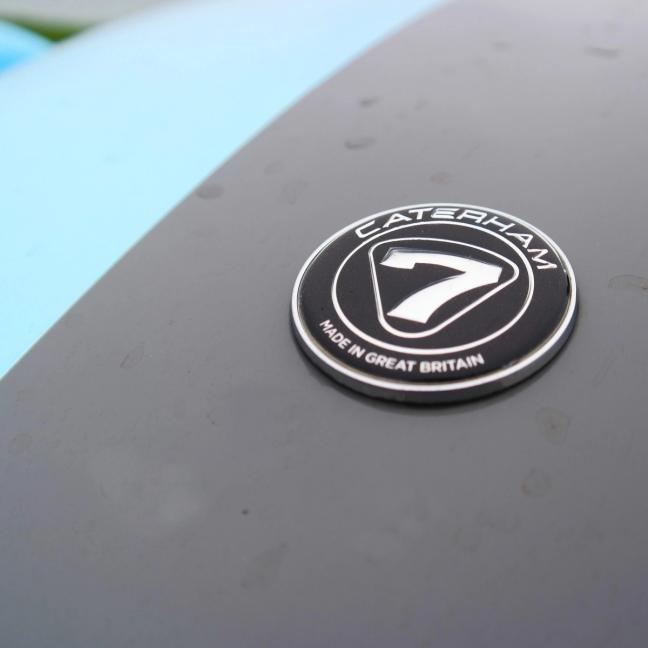
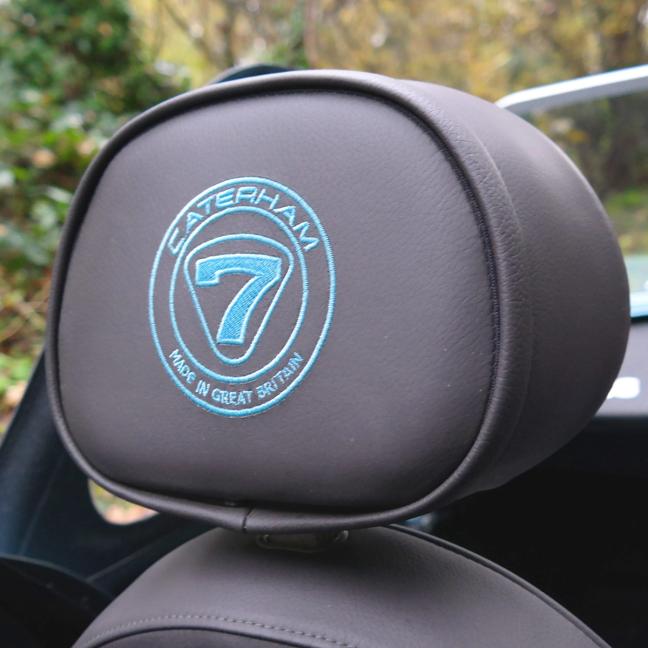
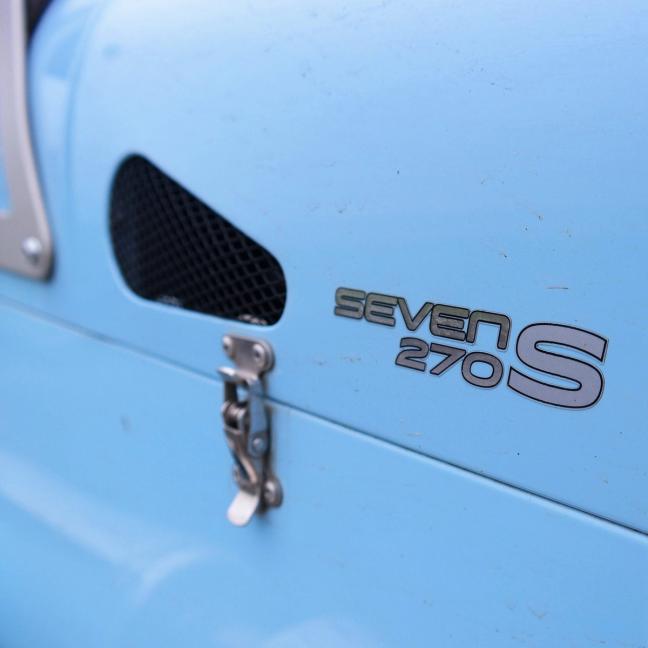
As we trundled out of London, getting used to the distinct lack of power steering and traction control, we were struck by how low you sit in the Seven. From the outside, of course, you can tell that you’ll be close to the tarmac — but it really does feel like you’re sitting on the road. Especially when an HGV decides to go for an overtake.
This ride height, we’d also been told, would leave us more shaken and stirred than a well-mixed martini. But, once more, detractors be damned! The suspension on the 270S — a softer set-up than comes as standard — keeps things rolling along without jerks, jolts or excessive shaking. Once you realise they’re not going to vibrate loose, it’s even quite fun to watch the front mudguards wobble as you wind down the rougher roads. Not once did we feel unsafe, even when we accidentally took a speed bump at 30 mph.
Once out of wider London, we even took the Seven on a short detour down a dirt track — and it tackled the puddles and potholes as if they weren’t even there. From Lurgashall to Linchmere, the ride quality didn’t let up once, and the reclined seating position — legs outstretched — only adds to the relaxation.


And this, the unexpected comfort of the Caterham Seven, brings us back to the hot water bottle. For all its good intentions, the hot water bottle was rendered nigh-on useless by the car’s nuclear heater. Perhaps it was the upgrade of the optional S pack, or maybe it’s because you’re sitting perilously close to the engine, but there wasn’t one moment on our cold December drive that we felt anything but toasty behind that tiny wheel.
If there’s one niggle to be had, it’s that the heater was one of the most confusing we’ve ever operated. There’s a choke that needs wrangling in the driver’s footwell, and then a couple of lit switches on the dashboard that all need to be aligned to make the thing work. But, once it’s on, you’ll warmingly want for nothing. Impractically cold? Detractors, be damned.
Bombing past Buriton, the roads turned twistier — and this is where the Caterham’s driving experience really came into its own. That utilitarian dashboard already has something of an early fighter plane about it, and when you’re swooping into tight corners and gunning down straights, you really do feel like you’re flying. That windscreen may be small, but visibility is still fine; especially when the roof is down. And, despite the car being fitted with semi-slick track day tyres — probably inadvisable on such a frosty day — we never once felt unsafe trying to push the Caterham towards its purported top speed of 122 mph. That’s no mean feat.

So what else? What else did the doubters warn us about? The engine, a 1.6-litre, four-cylinder non-turbo would not only produce 135 horsepower, they said, but also a fair amount of noise. And, while that was true to some extent, it wasn’t an ungodly racket. You can still have a conversation over its earnest grumble and, after three hours howling down the back roads, our heads were still without aches.
And the roof. It may be both flimsier and fiddlier than an electric hardtop, but an untimely cloudburst gave us the chance to test how quickly the roof could be re-poppered in a leafy lay-by. The result? Fast enough — and those bijou windscreen wipers aren’t nearly as ineffectual as they look.

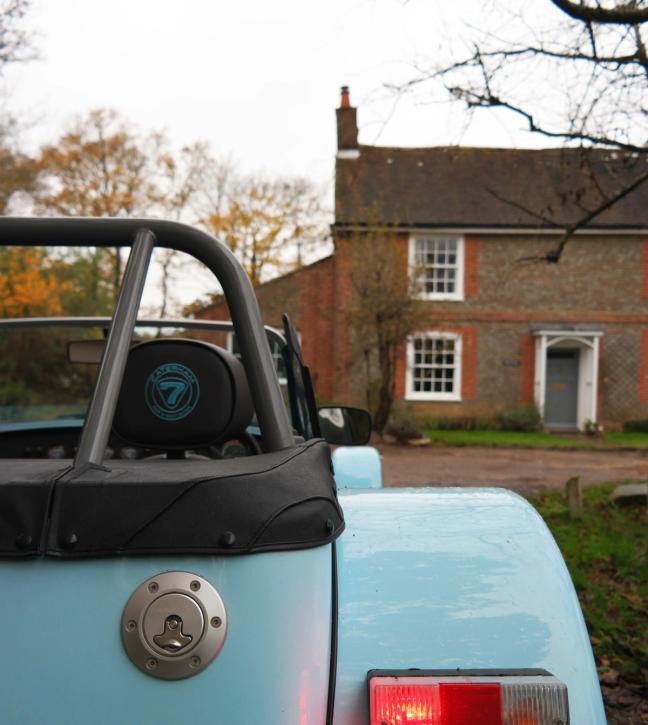
The Caterham Seven may have a reputation as a track car, or just a toy that you take for a summer evening spin. But that’s not quite right. True, those may be the funnest, most enjoyable experiences you can have in it; but couldn’t that be said of any car? Instead, while we were poised to hold our hands up and say that a December drive in the Caterham was a mistake, we’ve actually done a huge about-turn — and that’s trickier than it sounds in a car with no power steering…
There’s a surprising amount of boot space (easily enough for two weekend bags), a bafflingly smooth ride and the mechanical confidence to tackle almost any weather condition climate change can dream up. Above all, it makes for a grand road trip car. Who’d have thought?
Warm, dry and, most importantly, safe, we made it back up to London in the dark and in one piece. We wouldn’t say no to a radio, but that’s a minor quibble. Overall, just make sure you ignore what they say about these four-wheeled national treasures, because a Caterham’s for life; not just for summer. It’s an oddly practical, utterly memorable, happily comfortable gem of a sports car — and we’ll go toe-to-toe with anyone who says otherwise. Detractors, as we said, be damned.
Driving home for Christmas this year? Here’s our foolproof survival guide to the festive drive…

Become a Gentleman’s Journal Member?
Like the Gentleman’s Journal? Why not join the Clubhouse, a special kind of private club where members receive offers and experiences from hand-picked, premium brands. You will also receive invites to exclusive events, the quarterly print magazine delivered directly to your door and your own membership card.


